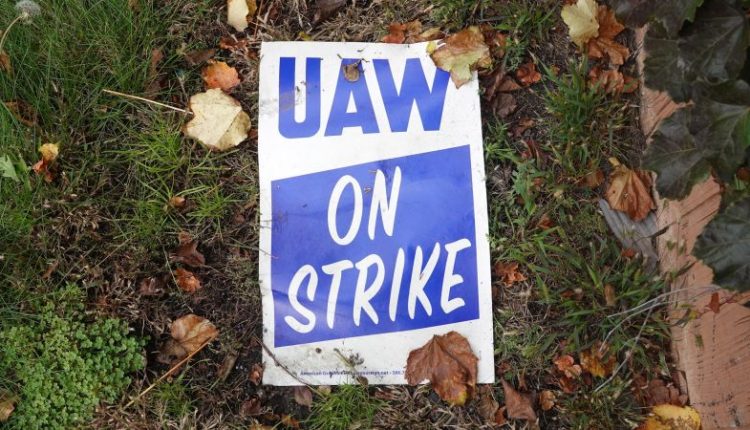The longest US auto strike in 25 years is nearly over. Maybe.
The United Auto Workers union announced a tentative agreement on a contract with General Motors Monday night. That followed similar announcements Saturday night at Stellantis, and last Wednesday at Ford.
The picket lines are coming down and the nearly 50,000 UAW members who have been on strike at one time or another are either back on the job or will be soon. But there is still a chance that the strike at one or more of the automakers could spring back to life in the next couple of weeks. That’s because the final decisions on the deals rest with the 145,000 rank-and-file members at the three companies.
Typically when a union goes on strike, and then reaches a tentative deal, the workers don’t return to work until the ratification process is completed. But the union had workers at Ford start to return to work in order to step up pressure on GM and Stellantis to match the agreement at Ford.
When Stellantis agreed to the deal Saturday night, the union announced its strikers would return to work, and it announced that nearly 4,000 members at a GM plant in Spring Hill, Tennessee would join the strike, in an effort to step up pressure on GM to get it across the finish line for its own deal.
The union hasn’t yet said why its 18,000 strikers are going back to work before the ratification process is conducted. But it would have been difficult to keep them out of work while strikers at Ford and Stellantis were back on the job, drawing their normal paychecks.
And this is also one of the first times that the union has had only some of the workers at a company go on strike, rather than all the union members. Since most UAW members at GM never lost a paycheck during this strike, it would have been difficult to keep the strikers on the picket lines while most continued to work.
But if the membership at any of the companies vote no, the strike would probably quickly resume at that company, perhaps this time with all of the members going on strike.
There are strong financial incentives for workers to approve the deals. The three agreements all give the majority of members who receive the top pay scale of about $32 an hour an immediate 11% raise, and then four subsequent raises totaling 14% more, before the contract expires in April 2028.
They would also return cost-of-living adjustments, or COLA, that the union gave up in 2007 whenall three automakers were strapped for cash and GM and Stellantis predecessor Chrysler where hurtling towards bankruptcy and federal bailout. When COLA and the guaranteed pay increases are combined, they are likely to raise top pay more than 30% over the life of the contract.
Fewer senior union members who are not at top pay could see their pay increase by between 20% to 46%. And some other workers being paid at a lower pay tier will get immediate raises of as much as 88%.
But rank-and-file members have increasingly rejected deals that had been agreed to by the union’s leadership. The most recent example of that was at heavy trucks manufacturer Mack Trucks, whose members voted on October 8 to turn down an 11th hour deal that been reached a week earlier.
When UAW President Shawn Fain laid out the details of the deal at Ford in a Facebook Live presentation on Sunday evening, there was a stream of comments being posted by people watching the presentation. The majority of those comments were critical of the deal and urged people to vote no.
Many of those criticizing the deal didn’t give reasons for their opposition, only urging people to vote no. Some objected to the fact that the senior workers were not getting as much benefit from the contract as more recently hired workers. And some objected to the union not achieving all its demands, including a traditional pension plan for those hired since 2007, and failure to return retiree health care coverage for those more recent hires.
The fact that there was so much criticism of the deal by posters isn’t necessarily an accurate representation of how the average member feels about the deal. There was vocal criticism on social media of the deal reached by the Teamsters union with UPS this past summer, and that deal ended up passing with the support of 86% of those participating in the vote.
Fain did say in his remarks over the weekend that the membership is the ultimate authority at the union. But he clearly was trying to sell the deals reached at Ford and Stellantis, telling members they achieved things that many people thought the union had not chance of winning at the bargaining table.
Read the full article here

